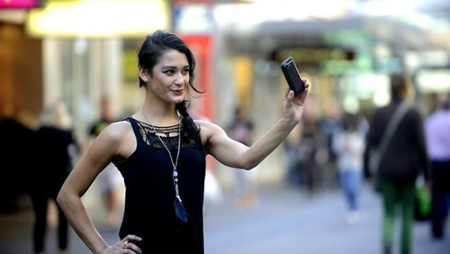
Did you get a new camera for Xmas, New Year or your birthday? Or did you get a newer smartphone? You know, one of those phones that does everything other than iron your shirts.
But can they really do everything? I saw a young photographer last weekend, trying to take shots of moving action, with a camera phone, and being disappointed.
Now whilst I know that camera phone technology has improved over the years, the end result is always a compromise. Is it a camera you can get phone calls on, or a phone that takes pictures? It is like the microwave oven that has a clock built in. Do you buy it to tell you the time in the kitchen, or to defrost food? (Please do not write in with the correct answers, there are no prizes for obvious questions!)
It actually stands to reason that if it needs a boxful of electronics, with an expensive piece of glass mounted on the front of it to get great photos, then you are not going to get the same quality from a camera phone. No, I use my camera to take photographs only, and use my mobile phone to ring Chiang Mai, not to photograph the Chiang Mai moat.
One of the problems when comparing cameras with cameras (forgetting camera phones for the minute) is people tend to read the magic number called megapixels and conclude that it is the deciding parameter between brilliant, good and not so good. 24 megapixels is better than 12 which in turn better is than 4.
Whilst the above is partly true, it really does depend upon what you want to do with the end result. Are you going to be blowing it up to the size of a barn door, or will it be an 8R (10×8) at most? If you have been hired to produce photographs for billboards, then look at a camera with megapixels coming out its strap swivels. For everything else, anything from six to 10 MP is more than adequate.
So what should you be looking for when buying a camera these (electronic) days? To start with, a fast autofocus. Instant zip-zip, not “pause for a second while I get myself ready and then zip”.
I also recommend inbuilt image stabilization. So many photographs are spoiled by camera movement producing ‘soft’ images, which can be overcome with image stabilization electronics. And as a further small advantage, these types of systems are particularly good for the senior citizen photographer.
You should also look at the shutter speeds the camera is capable of. 1/2000th of a second should stop a railway train (in Thailand, not in Japan) and be sufficient for 99 percent of action photography. It is also advantageous if any proposed camera has a time exposure setting so you can take photographs at night, including fireworks.
The other factor of importance is the Aperture, commonly called the f stop. The lens should be able to open up to at least f 4, and close down to at least f 16. This is to give you control over depth of field in your picture taking.
Just about every camera (other than a phone camera) has several modes for you to play with, or to help you. An ‘Auto’ mode for the days you are feeling lazy, or too rushed to start selecting shutter speed and apertures, is totally necessary for the weekend photographer. A for ‘Auto’ is fine for at least 60 percent of weekend photographs. It is only when we start getting into the remaining 40 percent that we need extra capabilities.
However, unless you are very aware photographically, a mode setting that selects the optimal shutter speed and aperture for the action photograph is a good feature to have in your new camera. Most cameras these days also have many other modes, and although I still believe you should know ‘why’ you open up by a couple of f stops when the subject is back-lit, which is what the ‘back-light’ mode does for you, that isn’t really necessary. I’m just being old-fashioned, I suppose.
And my normal camera? 12 MP, 1/2000th shutter speed and f 2.8.
 |
 |
 |





